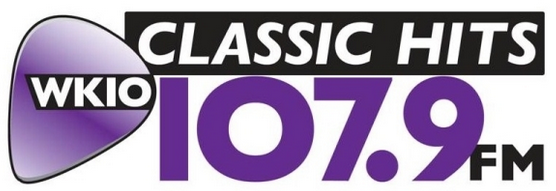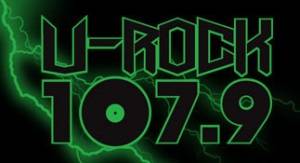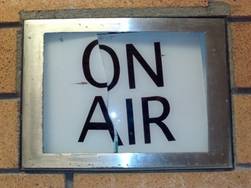
The halfhearted effort to keep the rock format on Chambana’s airwaves suffered another blow late last month when WUIL-FM, U-Rock 107.9, called it quits. Claiming longtime Champaign mainstay call letters WKIO (formerly the handle of Oldies 92.5), the station re-launched as a Classic Hits format on March 26.
I suppose I should thank DWS Inc. (the radio side of Professional Impressions Media Group, which owns News-Gazette) for taking one of my suggestions, but it seems more like adding a coat of beige paint to an already beige wall. I made my case earlier this year for new and different formats in the market, which you can read at the above link. “Classic hits,” to be clear, was not the standout candidate on that list, but here we are regardless.
Rather than ask what they should do with the station this time, I’d like to examine what they didn’t do with the rock station, what could (or should) have been done differently, and how that led to yet another antiseptic programming choice for Champaign-Urbana’s airwaves.
—
 U-Rock was on the air for three years or so, and in that time I heard from more than one person on more than one occasion some variation of the following: “I’ve never heard three songs in a row on that station that I could listen to.”
U-Rock was on the air for three years or so, and in that time I heard from more than one person on more than one occasion some variation of the following: “I’ve never heard three songs in a row on that station that I could listen to.”
Three songs. Nine to twelve minutes of programming, on average. That’s it. Approximately the amount of time it takes you to drive from campus to a downtown lunch spot (traffic and/or parking time included depending on the day).
The implication being, at least from the comments I’ve heard, that the station and/or the music were not good enough to warrant roughly ten minutes of listeners’ time.
Taking the other variables (on-air personalities, imaging, promotions, content, etc.) out of the equation for a moment, the comment above focuses on the songs — music. Listeners in Chambana, on the whole, are listening to a station for the music. While there are plenty of ways to get music now, radio is still free and virtually ubiquitous, and we go with what’s easy. Not to mention that, with rare exception, there are very few local personalities or radio hosts producing an engaging “program,” further making the music the most crucial element of a station’s success.
As such, examining the death of U-Rock requires examining the music choices and more importantly the way that music was arranged. In other words, programming.
Radio programming — the scheduling, categorization, and separation of songs — is done with specialized software, such as MusicMaster, Selector, AVScheduler, or similar. Among the features that radio stations rely on from these software suites (and reasons why they can’t just use iTunes to schedule everything), one of the most important is the ability to organize the radio station’s entire library into categories and create rules for those categories. The categorization of the music is designed to ensure a few things; songs that sound very, very similar are not played immediately next to each other, for instance, or the same artist is not played twice within a certain range of time.
Moreover, the software and rules allow a program director or music director to create a playlist each day (or each hour) that actually flows. Think back to when you created a mix tape (or CD for you darn kids out there) for a crush/boyfriend/girlfriend /etc. — the flow was crucial. If you were really trying to perfect the listening experience, you spent a good deal of time dubbing the tracks, arranging them, and so on.
Making the station sound coherent and seamless ensures not only listener loyalty but maximized Time Spent Listening (TSL) — a key element in ratings, and a critical measure that sales departments can use to impress potential advertisers. The longer you can get people to listen to your station and not the others, the more valuable your airtime will be.
If you were to put your entire iPod on “shuffle,” you would probably spend a fair amount of time hitting the “skip” button (at least I do). With a radio station, listeners do not have that capability. But they do have the ability to change the station — exactly what a PD does not want. This is where the importance of coding, categorizing, and organizing the music is emphasized.
Back to U-Rock — Was the music library coded, categorized, dayparted (playing harder rock or metal songs later in the day/evening — a common practice), etc.? I can’t say. I will say that it didn’t sound like it was. And that may have been the cause for the listener comment mentioned earlier. Again, the software that stations use provides tools for categorizing and creating rules for all the songs in a station’s library. Once configured properly, the software does a lot of the work in terms of creating a flow — which would mean that two and three and four songs in a row, or more, sound good together and extend the TSL. There is even a website that will build out a playlist for you, managing to find ways to segue between seemingly disparate styles or artists in a smooth fashion (even if just for kicks).
From outward appearances, though, this doesn’t seem to have been the case. That is the only explanation I can envision for this song segueing into this song without any transition (actual, real-life broadcast example there, by the way).
This is not to say that, at least theoretically, you couldn’t play both of those songs on the same station. But how you set them up is where the ideas of programming and flow come into sharper focus. Immediately jumping between virtually unrelated songs like that is anathema to most listeners’ ears. Consciously or unconsciously, most people will be looking for the “skip” button, which means tuning away from the station.
—
There is one other way to bridge the gap between songs that don’t really mesh — The DJ.
A longer break between two vastly different songs, filled with content, would provide a “break in the action” for the listener and sufficient separation between the songs to smooth over what might otherwise be a pretty bumpy change.
This could be accomplished in a variety of ways — historical artist info, tour information, or something locally relevant (events, etc.). Basically, anything that would offer the listener a brief respite and something else to focus on before resuming the tunes.
These opportunities were often overlooked. The programming either did not provide space for on-air content between these vastly different songs or, when he or she did, the break was exceptionally brief and without content. Without anything to momentarily divert the listener and essentially press the musical “reset” button, there’s little point in the break being there at all. Yet, without a break between the two songs, you run into the issues described above.
This lose-lose situation has a negative impact on listener loyalty, retention, and TSL, all of which leads to stagnant (or even negative) revenue. Which, in a small market (Champaign is market #210 according to Arbitron’s Spring 2013 rankings), is not something that any station or ownership group can afford.
—
 As you may or may not remember, prior to the News-Gazette owners purchasing and operating the station, it was on the air as urban station 107.9 Jamz. DWS Inc. filed with the FCC for transfer of the ownership and broadcast rights in the first half of 2010, and it was approved in July of that year.
As you may or may not remember, prior to the News-Gazette owners purchasing and operating the station, it was on the air as urban station 107.9 Jamz. DWS Inc. filed with the FCC for transfer of the ownership and broadcast rights in the first half of 2010, and it was approved in July of that year.
There is the possibility that the station was merely a “competitive purchase”; in other words, the ownership group bought it and filed for licensing solely so that someone else wouldn’t, thereby preventing a new competitor to their other radio properties from entering the market.
Or the rock format may have simply been a placeholder while plans moved forward to eventually turn the station to its present classic hits format. This would at least explain some of the shortcomings, including low-quality audio (tinny, echo-plagued, and low quality MP3s, for instance), lack of on-air content (breaks were often “that was … this is…” without news, trivia, tour dates, or anything else of interest), and so on.
Whatever the case, there was an opening in the market that was left unexploited by U-Rock for these three years. With one less classic rock station in town courtesy of 105.9’s switch to country and the multiple changes of format at 93.5 over the last several years, there were certainly options to explore one or more focused variants of the rock format. Sadly, what we wind up with instead is more Billy Joel ballads and the like.
I acknowledge the amount of speculation here, but from the standpoint of a listener, U-Rock left more questions than it answered, as does the choice of the Classic Hits format. Above all, this latest move creates a wider void of rock programming in Chambana and further homogenizes the local radio dial.








